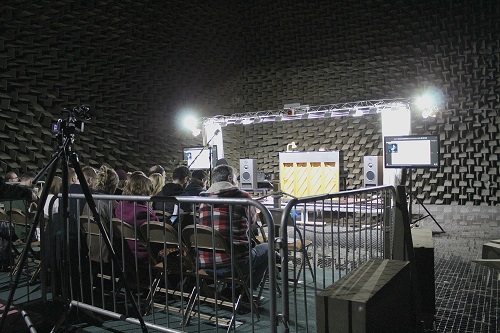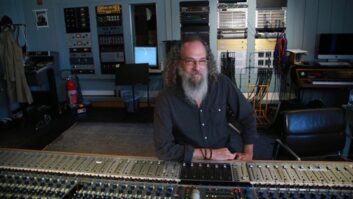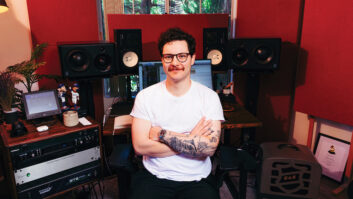
Peter Self, a senior lecturer in Music Business and Management at Canterbury Christ Church University, recently used PMC IB1S-AIII Active monitors in an experiment to determine whether people can tell the difference between live and recorded music.
To reduce acoustic variables to zero, the experiment took place in one of the country’s largest anechoic chamber at the Building Research Establishment centre in Watford, Hertfordshire. An invited audience was positioned in front of an acoustically transparent curtain and asked to say if they could tell the difference between music played live and the same piece recorded and played through loudspeakers. They couldn’t see what was happening behind the curtain so only had their ears as a reference.
“We started out by running a series of Live Versus Recorded days where participants were played various quality ‘versions’ of the same recorded music track and then asked to decide on the ranking in terms of perceived audio quality,” Peter Self explains. “As the tests progressed, we decided to provide our own high quality music source material recorded at 24bit/192kHz using extended frequency range Schoeps microphones. Initially we were comparing various encoded versions with the original recorded master, but we then developed the concept to include live performance, which constitutes the recorded source material as part of the comparative process.”
Peter Self says the choice of loudspeaker for playback was crucial, especially when the experiments moved into an anechoic chamber.
“They had to be of the highest quality and capable of delivering an accurate yet transparent sound,” Self explains. “The PMC system we used was ideal because the monitors had sufficient power to deliver volume in an anechoic environment. The fact that they were internally amplified and had minimal cone effect was also important because we wanted the recorded music to be as faithfully reproduced as possible. The high-end capabilities of the PMCs meant they performed perfectly and we were very pleased with the results.”
Self’s Live Versus Recording experiments are part of an ongoing five year project funded by Canterbury University’s School of Music and Performing Arts. Colloquially entitled ‘whatprice music’, it is looking at how consumers value recorded music, both in terms of entertainment and inspiration as well as in the monetary sense. Self is interested to know if varying demographics can differentiate between – or are even interested in – the notion of different audio qualities.
“The experiment we ran in the anechoic chamber was fascinating,” he says. “The audience found it challenging to tell the difference between the live and our high res recorded material in the anechoic environment and the results led to lots more questions. We’d like to expand the research in the future.”
For more information about this project and to sign up for future LVR days, please visit www.whatpricemusic.org.
-ends-
About PMC
PMC is a UK-based, world-leading manufacturer of loudspeaker systems, the tools of choice in all ultra-critical professional monitoring applications, and also for the discerning audiophile at home, where they provide a transparent window into the recording artist’s original intentions. PMC products use the best available materials and design principles, including the company’s proprietary Advanced Transmission Line (ATL™) bass-loading technology, cutting-edge amplification and advanced DSP techniques to create loudspeakers that present sound and music exactly as it was when first created, with the highest possible resolution, and without coloration or distortion. For more information on our clients and products, see www.pmc-speakers.com.







